[最新] table rules of inference 237948-Truth table rules of inference
Mathematical logic is often used for logical proofs Proofs are · Rules Of Inference for Predicate Calculus Table of Rules of Inference Addition If P is a premise, we can use Addition rule to derive P ∨ Q Here Q is the proposition "he is a very bad Conjunction If P and Q are two premises, we can use Conjunction rule to derive P ∧ Q Simplification If P · Rules of Inference in Symbolic Logic Formal Proof of Validity Rules of inference are understood as elementary valid arguments that are used in justifying steps in formal proofs In this post, I will discuss the topic "Rules of Inference in Symbolic Logic Formal Proof of Validity" As is well known, a "formal proof of validity" is a series of propositions, each of which follows from the

Table 1 From An Analogue Of Bull S Theorem For Hybrid Logic Semantic Scholar
Truth table rules of inference
Truth table rules of inference- · Definition The rules of inference (also known as inference rules) are a logical form or guide consisting of premises (or hypotheses) and draws a conclusion A valid argument is when the conclusion is true whenever all the beliefs are true, and an invalid argument is called a fallacy as noted by Monroe Community CollegeInference Rules (Rosen, Section 15) TOPICS • Logic Proofs !




Rules Of Inference And Logic Proofs
Discrete Mathematics Rules of Inference in Propositional Logic Definition & Types of Inference RulesTopics discussed1 Meaning of Inference2 Definition/07/11 · Rules of Inference Modus Ponens p =)q Modus Tollens p =)q p ˘q) q )˘p Elimination p_q Transitivity p =)q ˘q q =)r) p ) p =)r Generalization p =)p_q Specialization p^q =)p q =)p_q p^q =)q Conjunction p Contradiction Rule ˘p =)F q ) p) p^q « 11 BEShapiro forintegraltablecom This work is licensed under aCreative Commons AttributionRules of inference are syntactical transform rules which one can use to infer a conclusion from a premise to create an argument A set of rules can be used to infer any valid conclusion if it is complete, while never inferring an invalid conclusion, if it is sound
Inference Rules •Sounds inference Find α such that KB α •Proof process is a search, operators are inference rules •All inference rules of propositional logic apply to FOL Modus Ponens (MP) Example α ⇒ β Fish(George) ⇒ Swims(George) α Fish(George) β Swims(George) And Elimination (AE) α∧ β Tired ∧ Hungry α TiredRules of inference are syntactical transform rules which one can use to infer a conclusion from a premise to createan argument A set of rules can be used to infer any valid conclusion if it is complete, while never inferring aninvalid conclusion, if it is sound A sound and complete set of rules need not include every rule in the following list,as many of the rules are redundant, and canProblem 32 Easy Difficulty Give an argument using rules of inference to show that the conclusion follows from the hypotheses Hypotheses If Jill can sing or Dweezle can play, then I'Il buy the compact disc
Via Inference Rules Proposi'onalLogicProofs " If the conclusion is true in the truth table whenever the premises are true, it is proved " Warning when the premises are false, the · The next form of inference we will introduce is called "disjunctive syllogism" and it has the following form 1 p v q 2 ~p 3 ∴ q In words, this rule states that if we have asserted a disjunction and we have asserted the negation of one of the disjuncts, then we are entitled to assert the other disjunctMATH 213 Logical Equivalences, Rules of Inference and Examples Tables of Logical Equivalences Note In this handout the symbol ≡ is used the tables instead of ⇐⇒ to help clarify where one statement ends and the other begins, particularly in those that have a biconditional as part of the statement
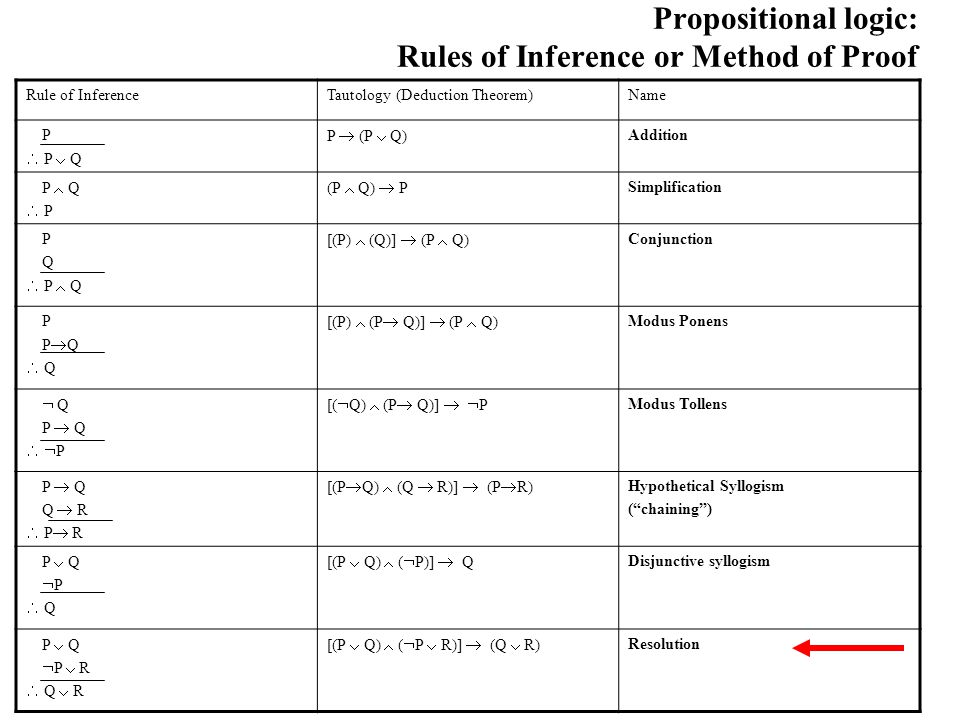



Show That The Argument Form With Premises P T Chegg Com
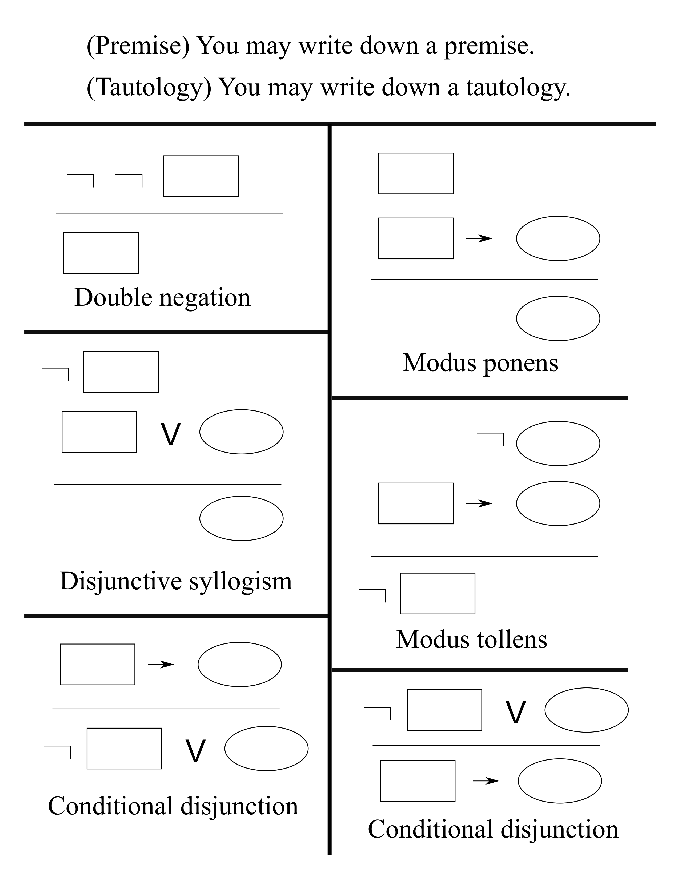



Rules Of Inference A Graphical Table
Rules of Inference and Formal Proofs Proofs in mathematics are valid arguments that establish the truth ofmathematical statements Anargumentis a sequence of statements that end with a conclusionThe argument isvalidif the conclusion (nal statement) follows fromthe truth of the preceding statements (premises)Using Rules of Inference Example 1 Using the rules of inference, construct a valid argument to show that "John Smith has two legs" is a consequence of the premises "Every man has two legs" "John Smith is a man" Solution Let M(x) denote "xis a man" and L(x) " xhas two legs" and let John Smith be a member of the domain · Modus tollens is the second rule in the 10 rules of inference in propositional logic It is also known as the act of "denying the consequent" The argument form modus tollens can be summarized as follows if the consequent of a conditional statement



Www Cs Colostate Edu Cs122 Fall14 Files Inferencerules Pdf



1
· Show that the set of rules of inference is decidable So outline an algorithm that will decide, given a finite set of formulas \(\Gamma\) and a formula \(\theta\), whether or not \(\left( \Gamma, \theta \right)\) is a rule of inference Prove Lemma 242 Write a deduction of the second quantifier axiom (Q2) without using (Q2) as an axiomSound rules of inference • Here are some examples of sound rules of inference • Each can be shown to be sound using a truth table RULE PREMISE CONCLUSION Modus Ponens A, A → B B And Introduction A, B A ∧ B And Elimination A ∧ B A Double Negation ¬¬A A Unit Resolution A ∨ B, ¬B AThe rule is valid with respect to the semantics of classical logic (as well as the semantics of many other nonclassical logics), in the sense that if the premises are true (under an interpretation), then so is the conclusion Typically, a rule of inference preserves truth, a semantic property




The Inference Rules Of Transition Relation Part 1 Download Table




The Conjunctive And Disjunctive Inferences With Their Required Formal Download Table
Here we have some "rules of inference" that isn't valid Invalidate it byfinding a counterexample that makes each premise true but makes the conclusion falsVia Truth Tables ! · Rules of Inference Simple arguments can be used as building blocks to construct more complicated valid arguments Certain simple arguments that have been established as valid are very important in terms of their usage These arguments are called Rules of Inference The most commonly used Rules of Inference are tabulated below –




Rules Of Inference In Artificial Intelligence Javatpoint




Truth Tables 1 4 Relations V 5 An Inference Over Download Scientific Diagram
· No, your table is correct You may be interpreting the result wrong You wish to have P true whenever the statements Q → P, ¬ Q → R, and R → P are all true at the same time That happens on the last three rows, and P is true for each oneIntroduction Rules of inference are syntactical transform rules which one can use to infer a conclusion from a premise to create an argument A set of rules can be used to infer any valid conclusion if it is complete, while never inferring an invalid conclusion, if it isMATH 213 Logical Equivalences, Rules of Inference and Examples Tables of Logical Equivalences Note In this handout the symbol is used the tables instead of ()to help clarify where one statement ends and the other begins, particularly in those that have a biconditional as part of the statement The abbreviations are not universal Equivalence



Http Site Iugaza Edu Ps Amarasa Files Sec 1 5 Pdf



Informal Logic Rules Of Inference Election 16 No Way Trump
These rules of inference are used extensively in mathematical arguments, often without being explicitly mentioned The following table gives rules of inference for quanti ed statements Universal instantiation is the rule of inference used to conclude that P(c) is true, where c is a particular member of the domain, given the premise (8x)P(x) · Use the rules of inference to prove the following (¬p ^ q) ^ (r → p) ^ (¬r → s) ^ (s → t) ) ⇔ t Homework Equations Rules of Inference I guess The Attempt at a Solution Honestly I don't know where to start using the rules of inference4 Table Rules of Inference 41 Example 1;



Plos One A Novel On Line Spatial Temporal K Anonymity Method For Location Privacy Protection From Sequence Rules Based Inference Attacks




Answered Table 1 14 More Inference Rules From Bartleby
This may be used to partition the chisquared test for a table in smaller pieces Rules for partitioning 1 The df for the subtables must sum to the df for the full table 2 Each cell count in the full table must be a cell count in one and only one Inference for Contingency tables 317 Created Date 2/19/07 AM · Ppt Discrete Mathematics Rules Of Inference And Proofs Powerpoint Presentation Id These arguments are called rules of inference the most commonly used rules of inference are tabulated below – similarly, we have rules of inference for quantified statements – let's see how rules of inference can be used to deduce conclusions from given arguments orRules of Inference The problem with truth tables in determining whether an argument is a logical implication or a valid argument is, as the number of premises increases, the more rows and columns needed for the truth table, which loses its appeal




Rules Of Inference And Logic Proofs




Rules Of Inference Discrete Mathematics Youtube
View Rules of Inferencepdf from MAT 1348 at University of Ottawa 1 Table of Inference Rules Number and Name of the Rule Rule of Inference Corresponding Tautology p 1 Addition p → (p ∨ q) ∴ · Decide if the following arguments are valid or invalid State the Rule of Inference of fallacy used (a) If it snows, then school is closed School is open Therefore it is not snowing (b) My pet is a cat or my pet is a dog My pet is not a dog Therefore my pet is a cat (c) If the movie is long, I will fall asleep I do fall asleepRules of Inference and Logic Proofs A proof is an argument from hypotheses (assumptions) to a conclusionEach step of the argument follows the laws of logic In mathematics, a statement is not accepted as valid or correct unless it is accompanied by a proof




Rules Of Inference In Artificial Intelligence Javatpoint




Mcse 003 Ignou Study Material By Ignou Mca Issuu
Introduction Rules of inference are syntactical transform rules which one can use to infer a conclusion from a premise to create an argument A set of rules can be used to infer any valid conclusion if it is complete, while never inferring an invalidInference rules Inference rules are the templates for generating valid arguments Inference rules are applied to derive proofs in artificial intelligence, and the proof is a sequence of the conclusion that leads to the desired goal In inference rules, the implication among allA rule of inference is a pattern of reasoning consisting of some schemas, called premises, and one or more additional schemas, called conclusions Rules of inference are often written as shown below The schemas above the line are the premises,




Unit 1 Rules Of Inference



1
1 Propositional Logic Axioms and Inference Rules Axioms Axiom 11 Commutativity (p ∧ q) = (q ∧ p) (p ∨ q) = (q ∨ p) (p = q) = (q = p) Axiom 12 AssociativityRules of inference for quantified statement (example) State which rule of inference is applied in the following argument There is a person in the store Therefore, some person c is in the store Solution Determine individual propositional function P(x) x is in the store Domain all people Determine the argument using P(x) x P(x) Therefore, P(c)Addition Simplification Conjunction Modus ponens Modus tollens Hypothetical syllogism



Www Cs Colostate Edu Cs122 Fall14 Files Inferencerules Pdf




Discrete Structures Cs Johnnie Baker Jbakercs Kent
• Using the inference rules, construct a valid argument for the conclusion "We will be home by sunset" Solution 1 Choose propositional variables p "It is sunny this afternoon" q "It is colder than yesterday" r "We will go swimming" s "We will take a canoe trip" t5 rows · What are Rules of Inference for?Rules of inference are syntactical transform rules which one can use to infer a conclusion from a premise to create an argument A set of rules can be used to infer any valid conclusion if it is complete, while never inferring an invalid conclusion, if it is sound




Rule Of Inference Problem Example Youtube




Propositional And Firstorder Logic Chapter 7 47 8
Table Rules of Inference a short summary The rules above can be summed up in the following table 1 The "Tautology" column shows how to interpret the notation of a given rule Rule of inference Tautology Name; · Rules of Inference The Method of Proof The construction of truthtables provides a reliable method of evaluating the validityof arguments in the propositional calculus We can always tabulate the truthvalues of premises and conclusion, checking for a line on which the premises are true while the conclusion is false · Hi I'm trying to write a neat step by step description of rules of inference just like the picture below It seems like there are 3 columns and on each column it is center aligned Create environment that allows writing multipage table content down the column rather than across the row 2 Help with complicated construction of tables 2




Cs 63 Propositional And Firstorder Logic Chapter 7




Rule Of Inference And Truth Table Issue Mathematics Stack Exchange
List of Rules of Inference Table Rules of Inference A Short Summary Example 1 Example 1 Let us consider the following assumptions "If it rains today, then we will not go on a canoe today If we do not go on a canoe trip today, then we will go on a canoe trip tomorrow5 Table Rules of Inference 51 Example 1; · 2 Answers2 The procedure checks that every truth assignment that satisfies all premises must also satisfy the conclusion The first (omitted) step is about premise 4) ¬O that forces the possible truth assignments v to have v(O) = F Thus, considering 3) D ∨ O, we must have v(D) = T, in order to satisfy it v(D) = T imples v = F, in order




Table V From Inference Rules For Rdf S And Owl In N3logic Semantic Scholar
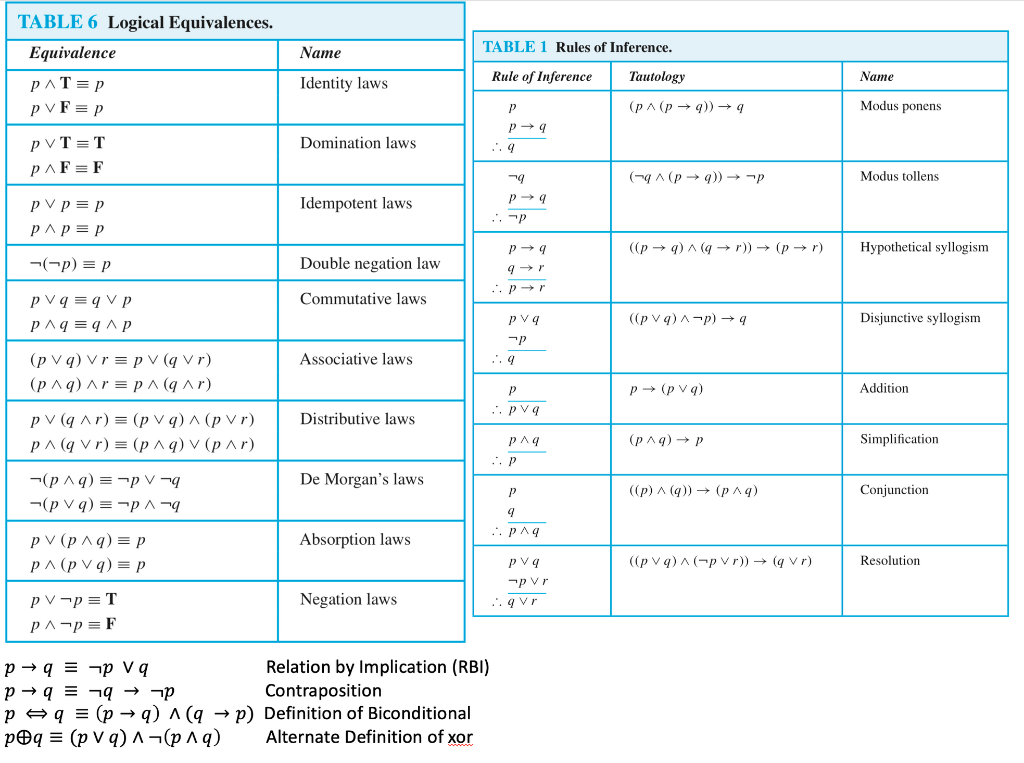



Table 6 Logical Equivalences Table 1 Rules Of Chegg Com
The other two q and r, they are actually related with the logical connectives the disjunction22So, it the logical implication, I can write p or q and negation p or r this implies q2848or r and this is called the Resolution This is called the Rresolution2901So, these are my the 8 Rules of InferencesIn logic and mathematics, the logical biconditional, sometimes known as the material biconditional, is the logical connective used to conjoin two statements P and Q to form the statement "P if and only if Q", where P is known as the antecedent, and Q the consequent This is often abbreviated as "P iff Q "Other ways of denoting this operator may be seen occasionally, as




Propositional And Firstorder Logic Chapter 7 47 8



Http Www1 Se Cuhk Edu Hk Seem5750 Lecture 6 Pdf
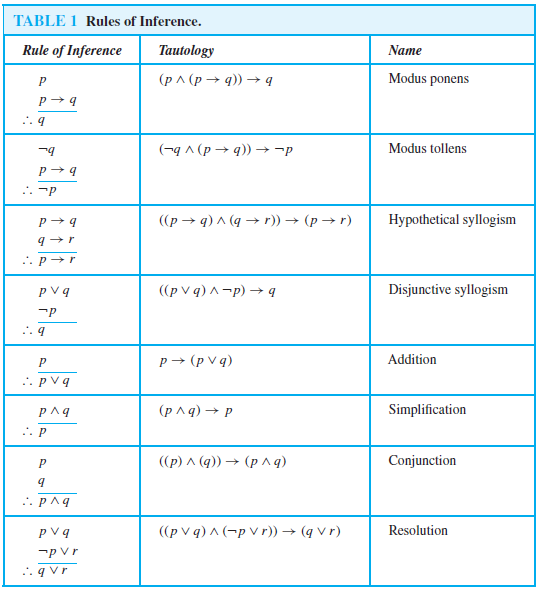



Rules Of Inference For Propositional Logic
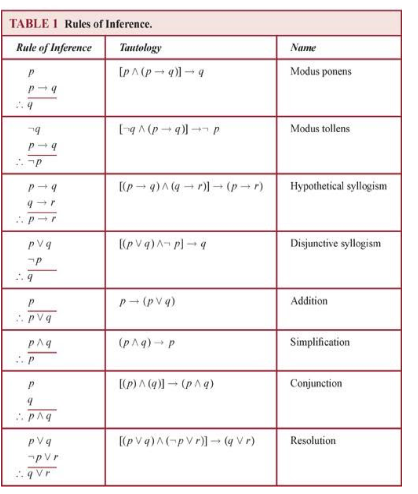



Use The Rules Of Inference Table What Rule Of Chegg Com




My Skill Discrete Mathematics Rules Of Inference




Discrete Mathematics Lecture Ppt Download




Using Rules Of Inference To Build Arguments
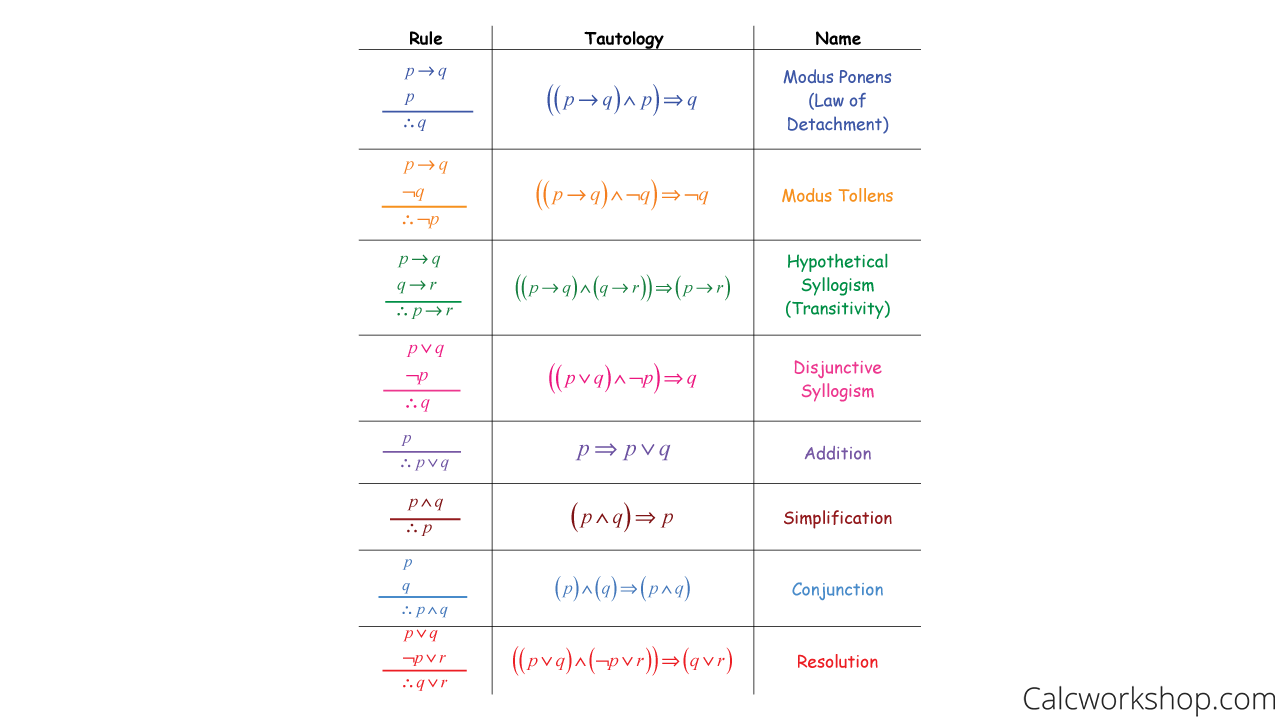



Rules Of Inference Detailed W Step By Step 7 Examples
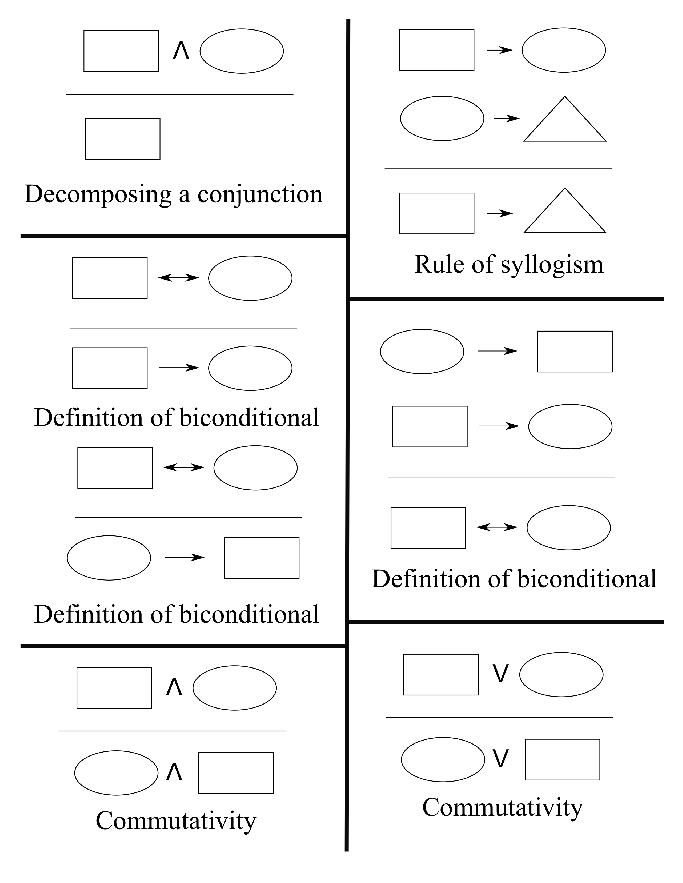



Rules Of Inference A Graphical Table




Pdf Analogical Reasoning And Semantic Rules Of Inference Semantic Scholar




Rules Of Inference For Predicate Calculus First Order Logic Validity
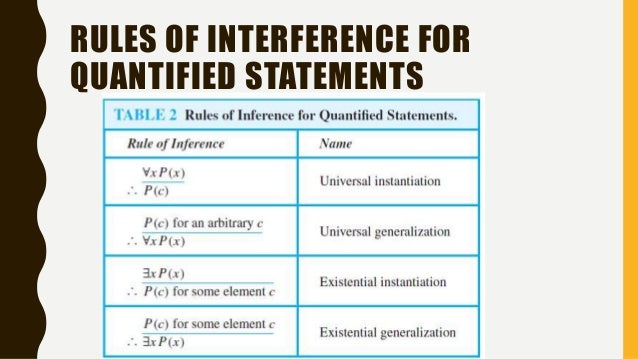



Unit 1 Rules Of Inference




Table 3 From Tarski S Relevance Logic Version 2 Semantic Scholar



Http Courses Ics Hawaii Edu Reviewics141 Morea Predicate Logic Rulesinference Qa Pdf
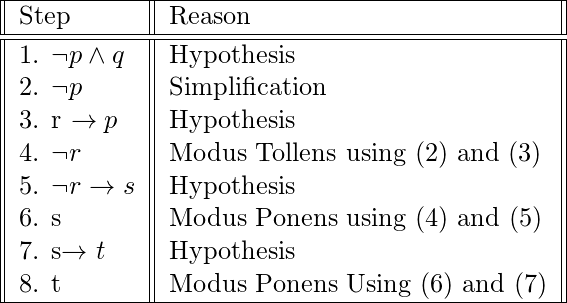



Mathematics Rules Of Inference Geeksforgeeks




Table 1 From Knowledgebase If Then Else Rules Inference Engine Forward Chain Backward Chain User Interface Able To Ask Query Get Input And Explain Desired Answer Semantic Scholar
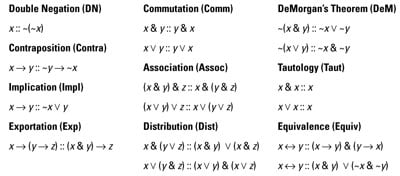



Logic For Dummies Cheat Sheet Dummies



1




2 3logical Implication Rules Of Inference From The Notion Of A Valid Argument We Begin A Formal Study Of What We Shall Mean By An Argument And When Such Ppt Download




Relational Database And Propositional Logic Rules Of Inference With Download Table




On Inference Rules



Mathematics Rules Of Inference Geeksforgeeks
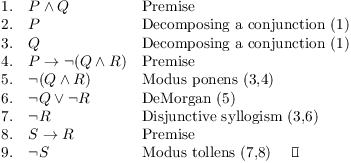



Rules Of Inference And Logic Proofs



4 Proofs A Concise Introduction To Logic



Watson
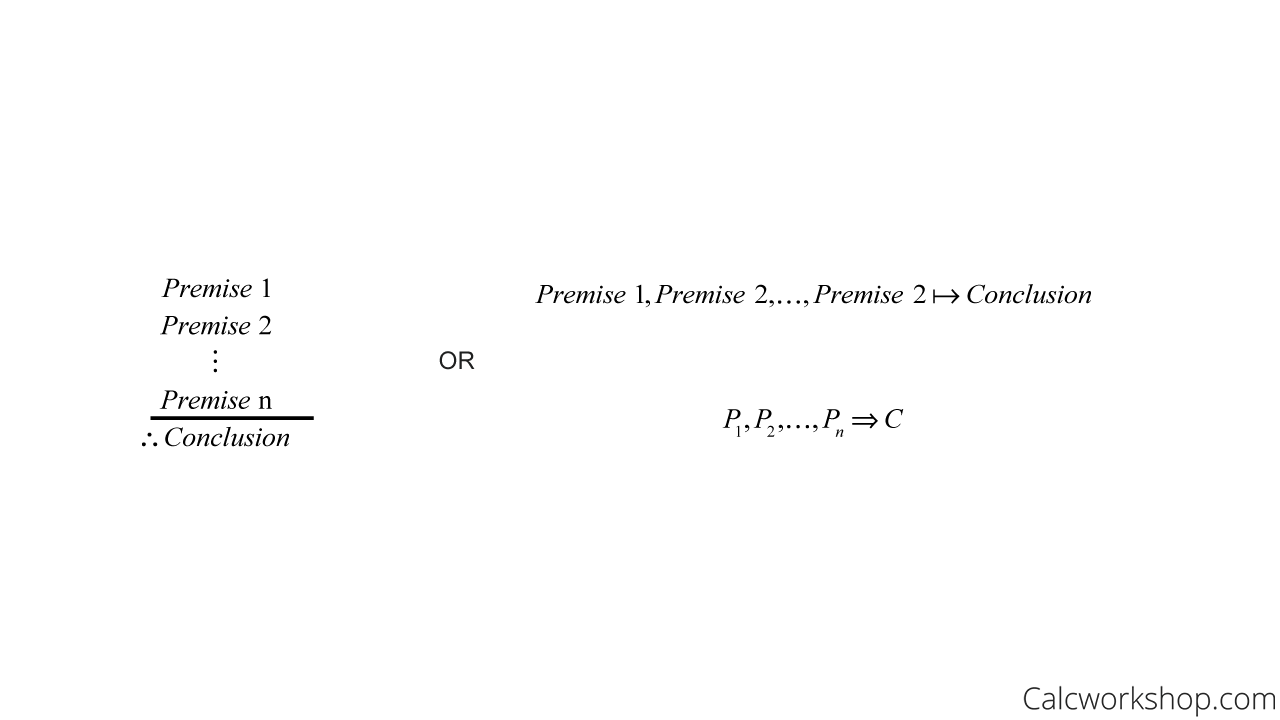



Rules Of Inference Detailed W Step By Step 7 Examples
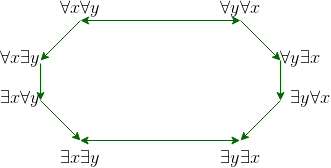



Mathematics Rules Of Inference Geeksforgeeks




Examples Of Inference Rules Of Temporal Relations Download Table




Table 1 From An Analogue Of Bull S Theorem For Hybrid Logic Semantic Scholar
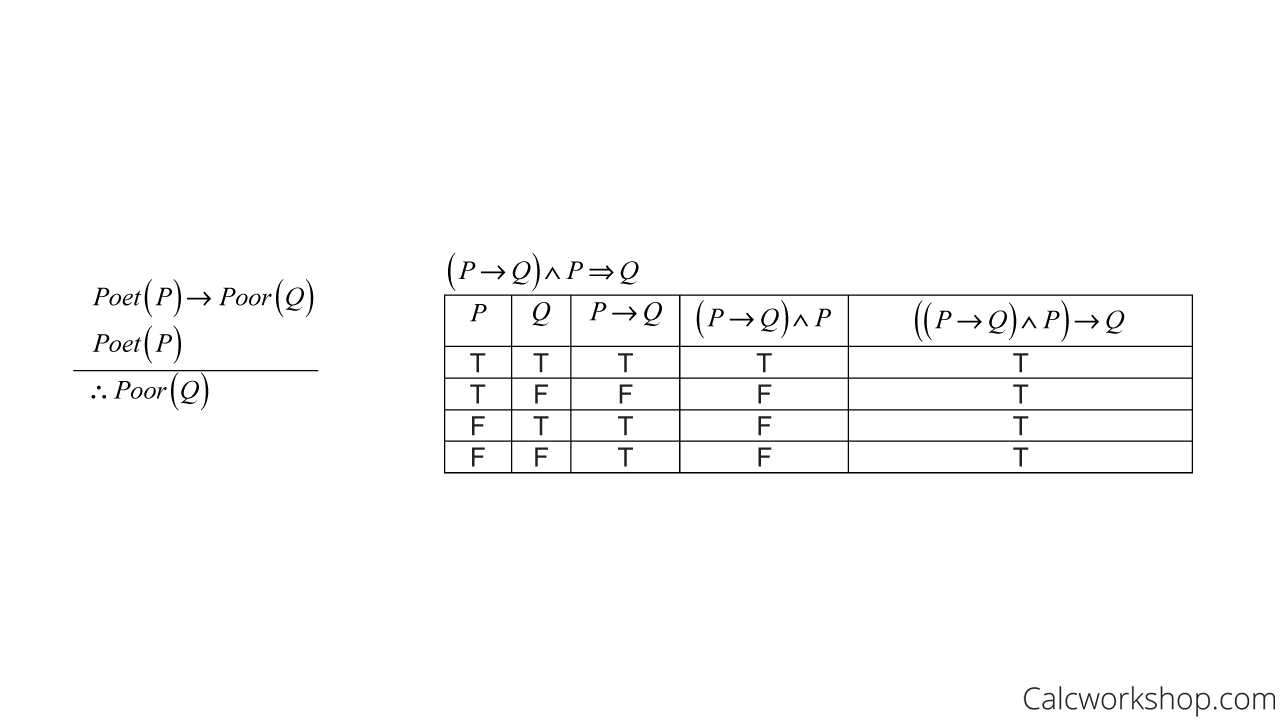



Rules Of Inference Detailed W Step By Step 7 Examples



What Is Logic And How Do We Use It Quora



1



Http Thatmarcusfamily Org Philosophy Course Websites Logic S04 Lessons Inference1 Pdf




Table I From Inference Rules For Rdf S And Owl In N3logic Semantic Scholar
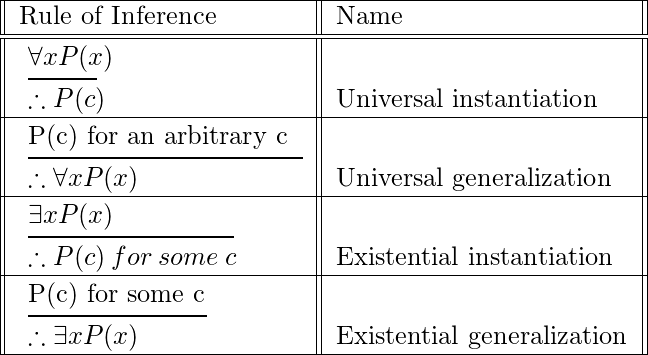



Mathematics Rules Of Inference Geeksforgeeks
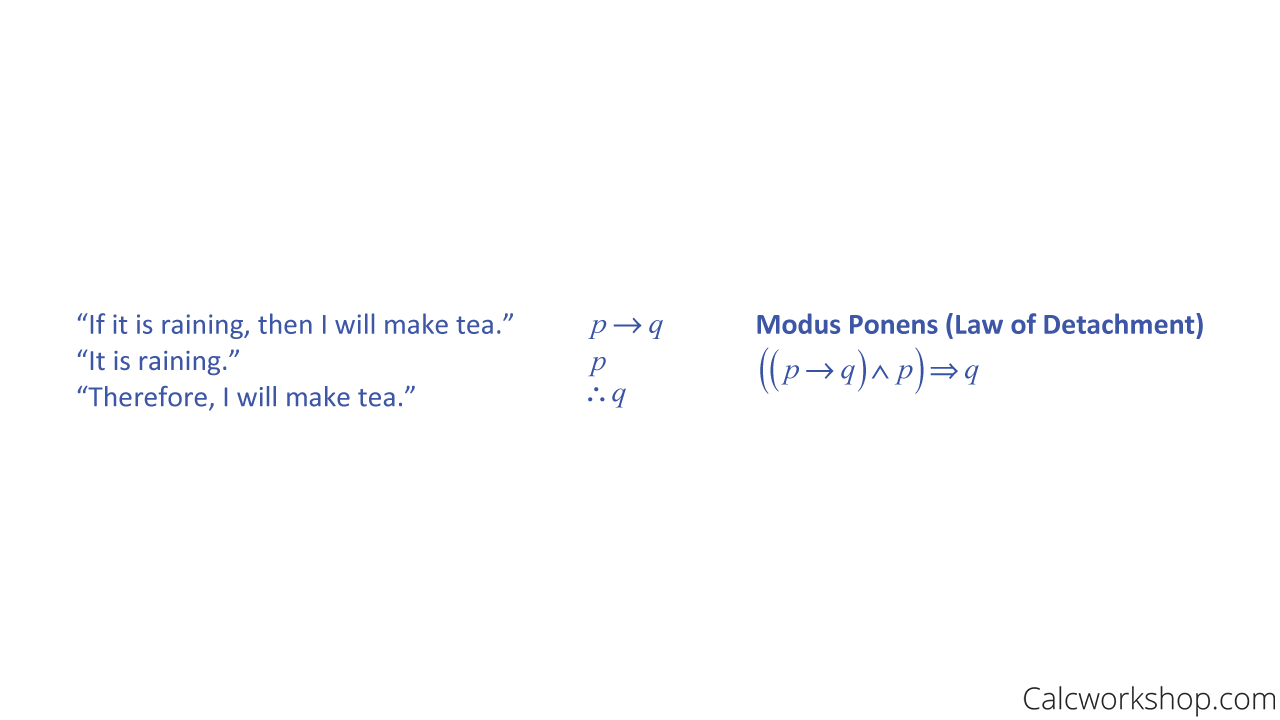



Rules Of Inference Detailed W Step By Step 7 Examples




Proof Techniques 1 Some Terminology N Theorem Is




Logical Reasoning Truth Table Rules Of Inference Powerpoint Lecture




Logic For Dummies Cheat Sheet Dummies




Tab Table 1 Rules Of Inference Rule Of Inference Chegg Com




If Then Inference Rules Download Table
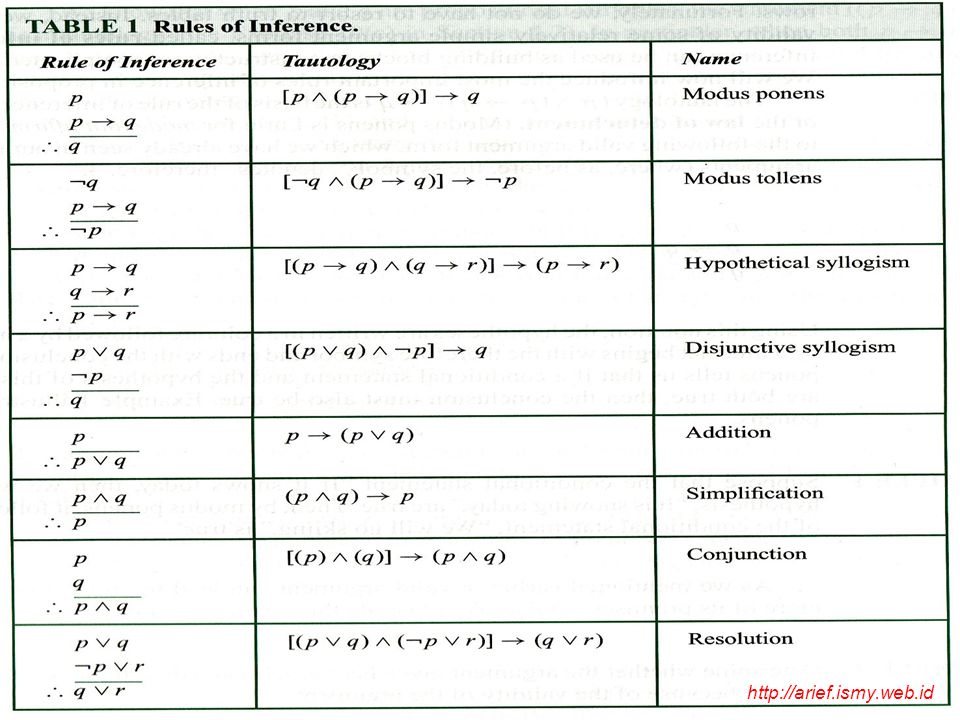



Muhammad Arief Download Dari Ppt Video Online Download
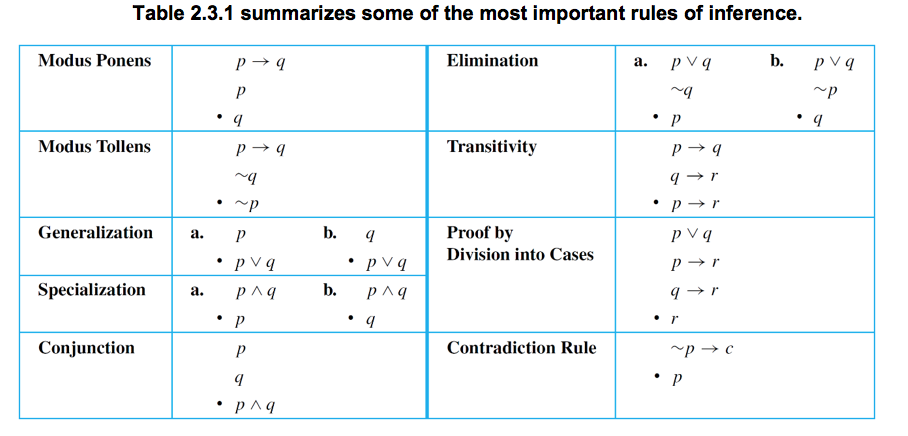



Table 2 3 1 Summarizes Some Of The Most Important Chegg Com



Http Site Iugaza Edu Ps Hmahdi Files 19 03 Section 1 6 Pdf




Discrete Structures Ds Ppt Video Online Download




17 Using Rules Of Inference To Build Arguments




Proof Techniques Ppt Download




Using Rules Of Inference No Substitution Prove That Chegg Com




Relational Database And Propositional Logic Rules Of Inference With Download Table
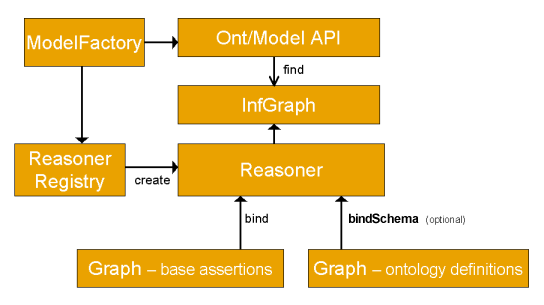



Apache Jena Reasoners And Rule Engines Jena Inference Support




Rules Of Inference Argument Metalogic




Rules Of Inference In Artificial Intelligence Javatpoint



Www Cs Colostate Edu Cs122 Fall14 Files Inferencerules Pdf



Table 2 Rules Table For Fuzzy Inference System Fuzzy Self Tuning Of Pid Controller For Active Suspension System Science And Education Publishing




Rules Of Replacement Formal Proof Of Validity In Logic




Rules Of Inference Techtud
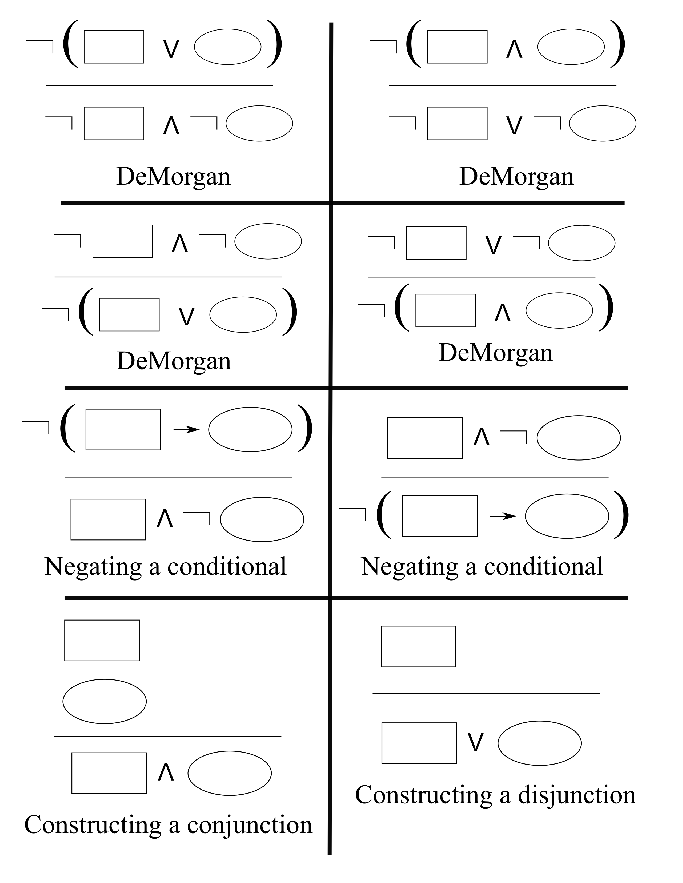



Rules Of Inference A Graphical Table
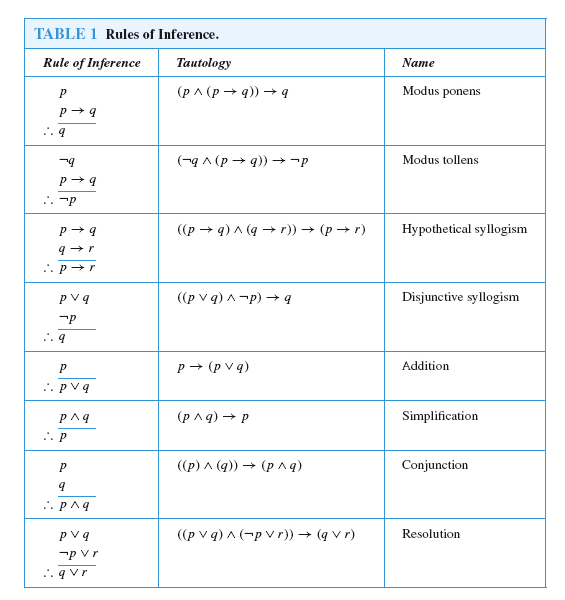



In The Back Of An Old Cupboard You Discover A Note Chegg Com




Pdf The Processes Of Inference Semantic Scholar




22 Modus Ponens In Rules Of Inferences In Logic Discrete Mathematics Discrete Math Tutorials Youtube




1 5 Arguments Rules Of Inference Pdf Free Download



Http Courses Ics Hawaii Edu Reviewics141 Morea Predicate Logic Rulesinference Qa Pdf




Chapter 3 Mathematical Reasoning 3 1 Methods Of




Rules Of Inference Definition Types Of Inference Rules Youtube




Rules Of Inference Rosen Ppt Video Online Download




1 5 Rules Of Inference Ppt Video Online Download




Rules Of Inference In Artificial Intelligence Javatpoint




Rules Of Replacement Formal Proof Of Validity In Logic




Discrete Mathematics Rules Of Inference Tutorialspoint




Rules Of Inference




Copyright C Cengage Learning All Rights Reserved Ppt Video Online Download



Plos One Ologs A Categorical Framework For Knowledge Representation




Rules Of Replacement Formal Proof Of Validity In Logic
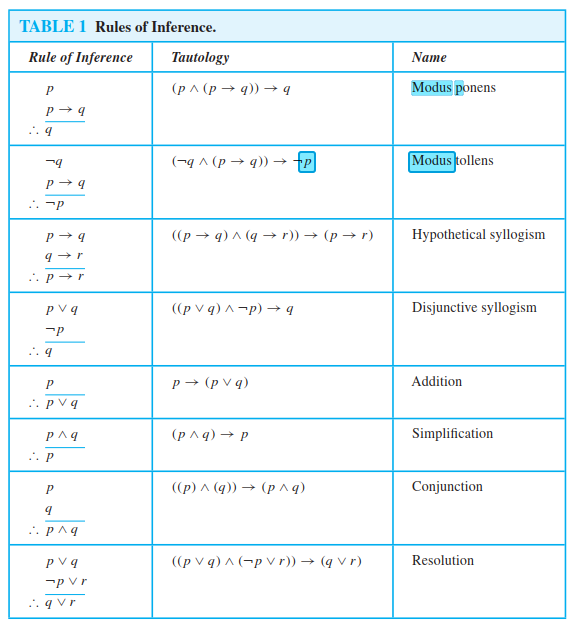



2 Discrete Math Please Help Me Answer This Chegg Com
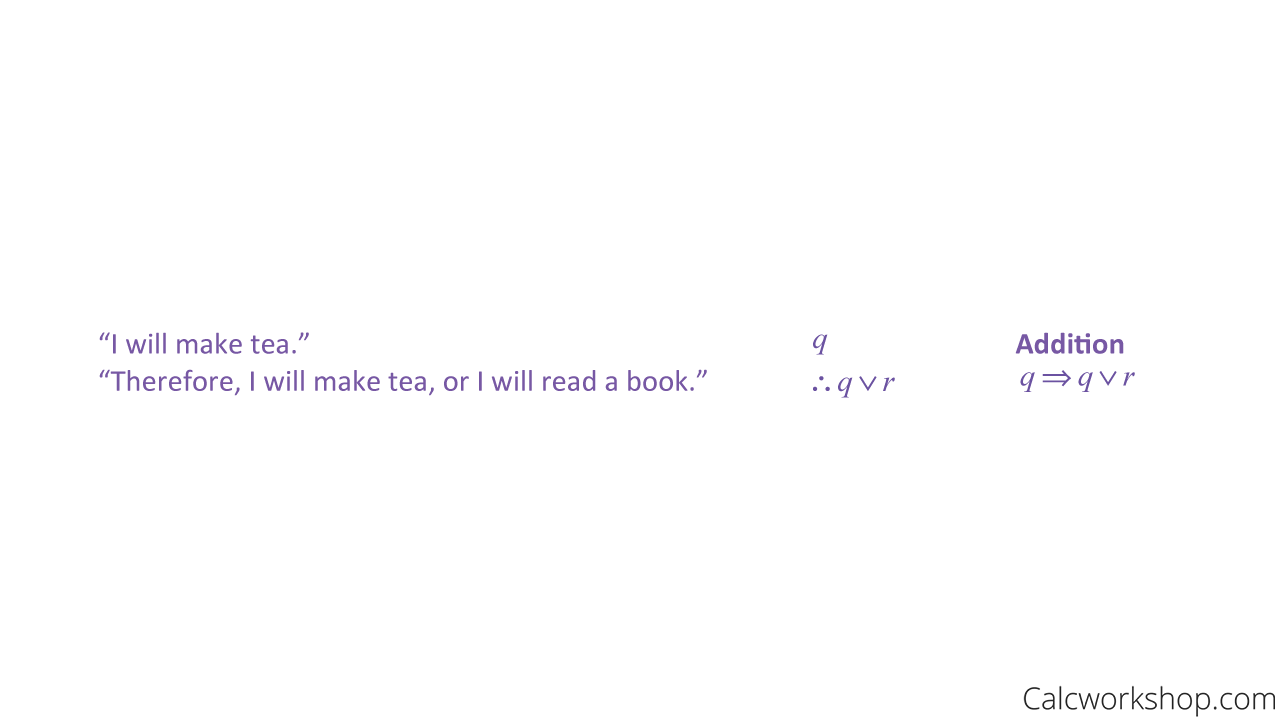



Rules Of Inference Detailed W Step By Step 7 Examples
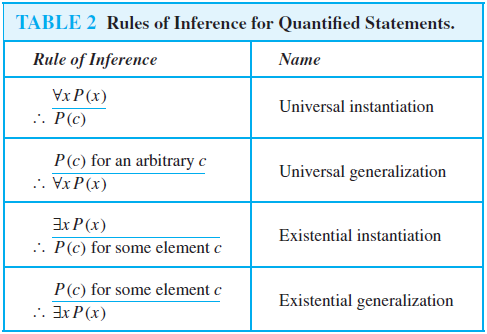



Rules Of Inference For Quantified Statements
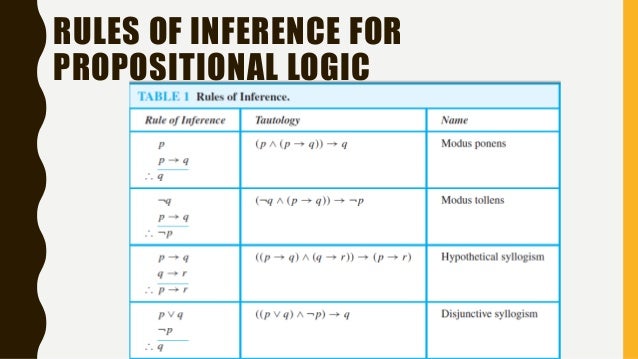



Unit 1 Rules Of Inference




Rules Of Inference And Logic Proofs


コメント
コメントを投稿